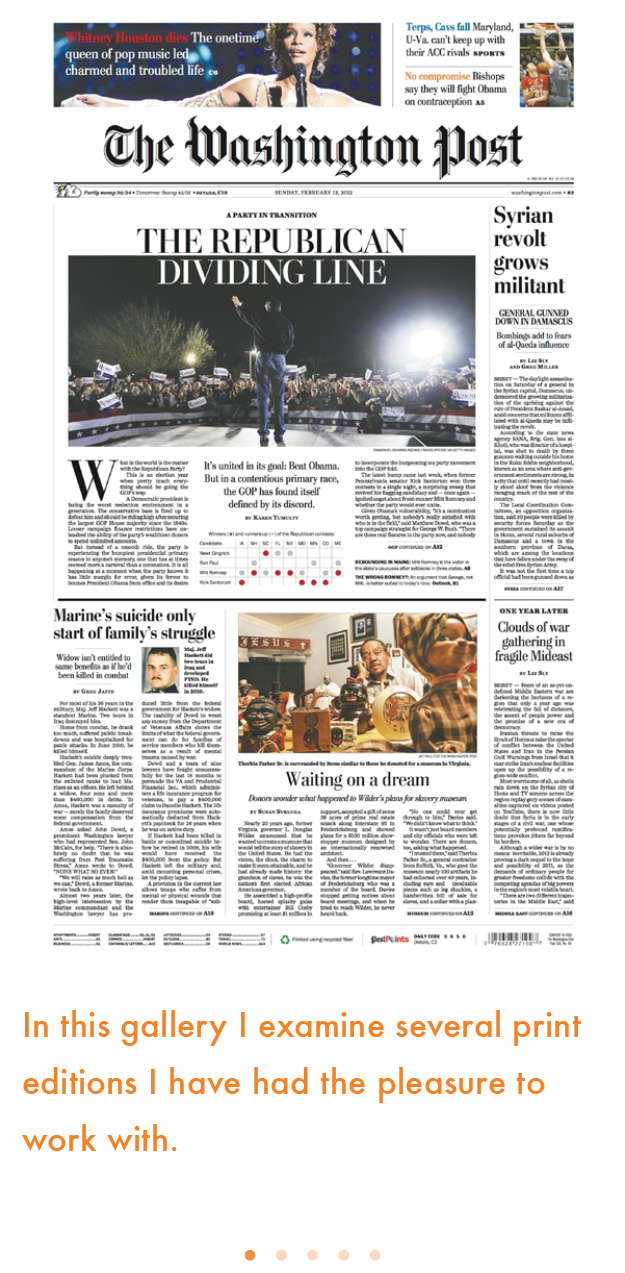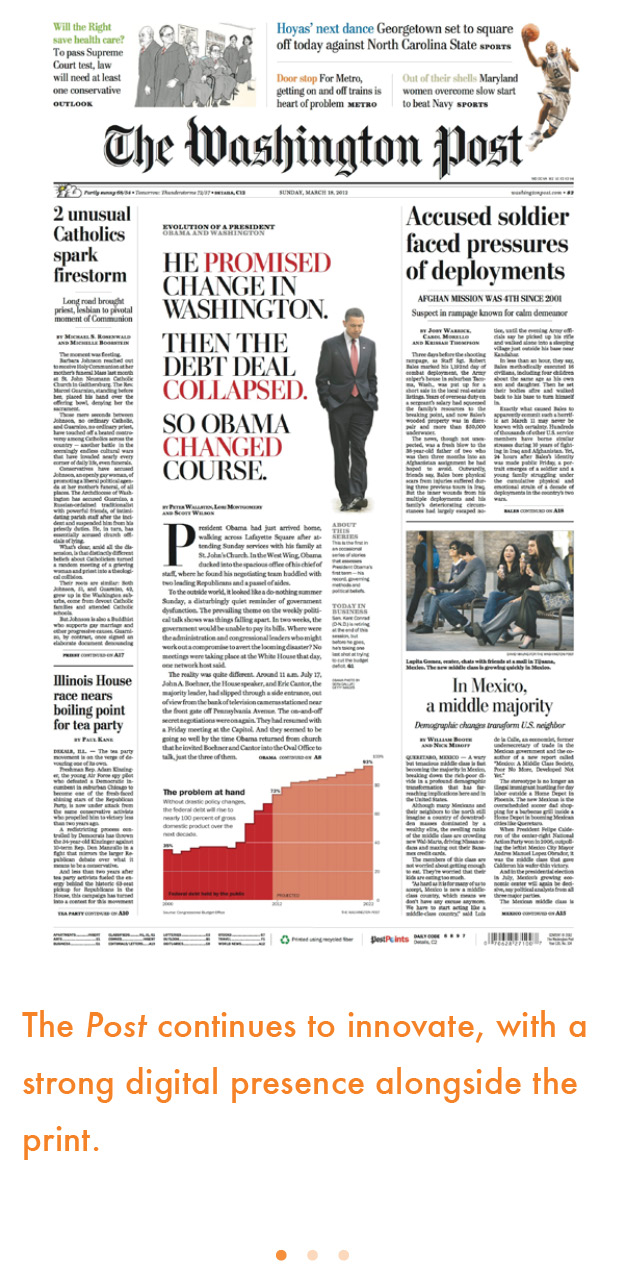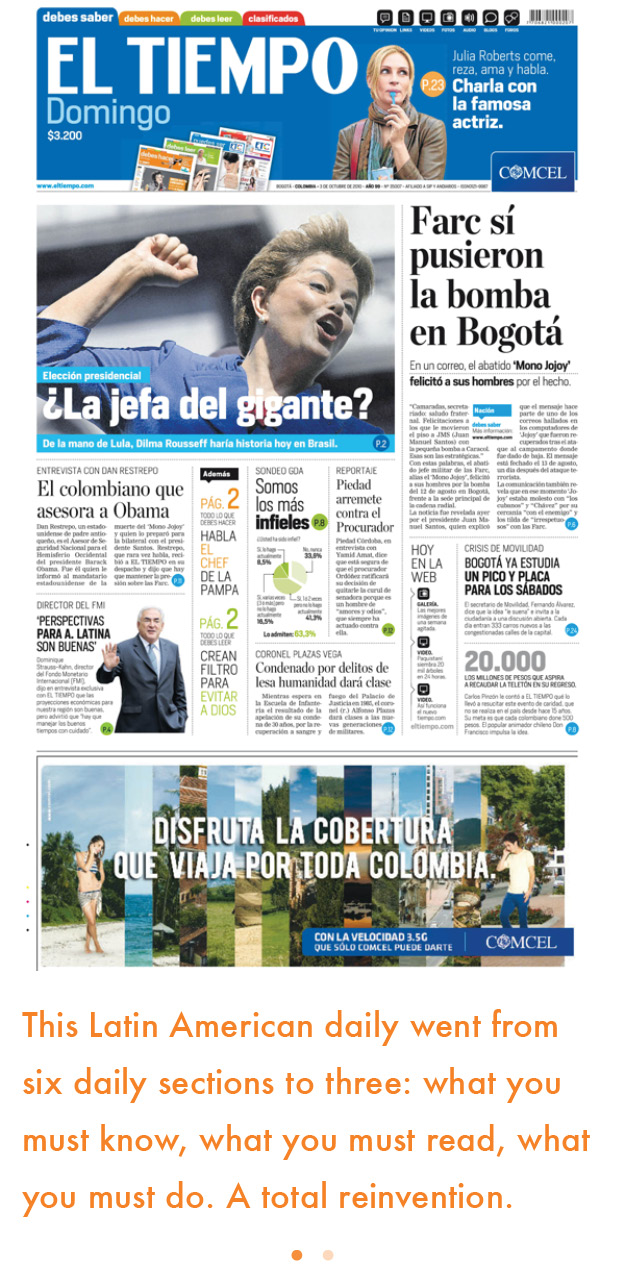2. THE MEDIUM OF PRINT
THE TAKEAWAY
How eternal print is depends on how well editors and publishers adapt to a multiplatform world.
Every generation of journalists has sensed the threat of a new medium to print. When newspapers first appeared around the seventeenth century, there were those who were already writing the obituary for books. Who would read a book when there was a fresh, printed daily sheet to tell us what was going on in the world?
Then along came radio, and it was going to destroy print journalism with its 24-hour programming and news on the hour every hour. Television next seemed to pose the greatest of threats, of course. How could a printed newspaper compete with the excitement, constant thrills and entertainment of television?
Today television executives wonder if the tablet, with its dominant consumption during the lean-back evening hours while the audience is in relaxation mode on the couch, can pose the greatest and definitive competition to television programming. Television executives can relax a bit, since we often read that the “lean back” mode applies to both tablet and television. Many tablet users may even be engaged in their tablet consumption while also paying attention to a television show! Simultaneous multiplatform consumption is not at all surprising for those who pay attention to this always-on culture.
The real threat is actually the clock. A day only has twenty-four hours. It is how we spend that time and how much of it we decide to use to satisfy our information needs that makes the ultimate difference. The future, like the present, will see consumers with plenty of choices across platforms, because I am confident that not one of the existing platforms is likely to disappear.
And this includes print, of course. Print advocates such as Tyler Brûlé, editor of Monocle magazine, and William Powers, author of the informative and inspirational Hamlet’s BlackBerry, remind us that print is eternal and that no medium kills another. When you are reading your daily newspaper under a tree or by your fireplace, there is no chance that a beep will alert you to breaking news. It is the definitive lean-back experience, in total silence if a user so chooses. There will always be an audience that wishes to disconnect, lean back and enjoy silence: Print provides that ultimate escape.
Obviously, a large portion of the audience wishes to engage in both lean-forward and lean-back activities, a choice they make at different times of their day. Total disconnect, I believe, may be more of a weekend trend, which is why so many print newspaper executives beef up their weekend editions, so that if they are going to sell “paper disconnect” in the future, it will be through that robust and ready-to-be-enjoyed-in-peace weekend edition.
CHANGES WE MAY SEE FOR PRINT
If there is a printed edition of the newspaper of the future, as I am sure there will be, then we are likely to see that medium change with the times. For one thing, I continue to predict that newspapers will adopt compact formats. When we read online or on the tablet, we enjoy getting information on a small and manageable canvas. It is, therefore, more difficult to turn our attention to a printed sheet that is large and wide, that cannot be read comfortably while riding as passengers on a train, plane or bus.
Even magazines are adopting the smaller format that resembles the shape of the tablet screen. In fact, a PaidContent article reminds us that “print magazines pretty soon could start looking a lot like their app equivalents.” The same may happen to newspapers, which may go beyond the more traditional tabloid format to adopt the A4 size, quite popular with German-language newspapers such as Germany’s Morgenpost or Austria’s Kleine Zeitung. The switch from print to digital would be more direct, less dramatic, affording users better transitions between platforms.
However, size is not all that matters if we are to revise the definition of the role of printed newspapers in the digital era. Printed newspapers have lost the time advantage. Yet they have not at all lost ground in their ability to make consumers smarter and better informed. The didactic role for which newspapers were famous and necessary in the eighteenth and nineteenth centuries still remains important today, perhaps even more. Saddled with less breaking news, many print editors will turn to the essay, the analysis and the personal column as tools with which to surprise and to please consumers.
Savvy print editors invite readers to relax with their newspaper, get smarter and benefit from the so-called Ikea effect: Anything you put manual effort into, such as the choreography of turning a newspaper page or folding the page to fit the article you are reading, is likely to remain with you longer and offer greater satisfaction.
In a multiplatform media world, however, one platform influences the other beyond the size of the page or screen. I believe strongly that we have an increasing number of media consumers who bring to print some of the habits they have acquired through digital platforms. It is because of this that navigation plays such a key role in the design of a printed newspaper or magazine. Websites make navigation more evident, with prominent “nav bars” atop many pages. Accustomed to such clear organization, “printnets”—readers who feel equally comfortable reading a printed page or on a screen—want to “click” on unambiguous calls to action in the printed newspaper.
Digital media has created an audience of users who are more tech- savvy, but also more impatient and less forgiving. The old newspaper page one index appears lazy and convoluted to the person who is used to a navigation bar on a website or tablet app. In the next ten years, we are likely to see more multiplatform users. consuming information from all of the platforms and expecting the same type of immediate results and satisfaction. How we, as storytellers and information architects, accomplish that task will determine, to a large degree, the success of our products.
DOING PRINT HAPPILY
Print thrives, and it gets along well with its new cousins the mobile phone and the online edition, although it has a soft spot for its sibling, the tablet. The transfer from print to tablet seems to be more visually amicable than to the other platforms. The experience of reading on the tablet matches very closely that of reading print, whether in newspaper, book or magazine format.
And so editors and designers are reviving their print editions, making them not just coexist better with their digital versions but truly allowing for the individuality of each medium to prevail. There are newspapers being born as of the writing of this textbook. And there are long-existing newspapers redefining their roles instead of battling for survival.
They are reaching out to new audiences and adding more color and visuals, incorporating the digital platforms when needed but retaining their unique print personality. A great printed newspaper does not have to look like any other medium. The more it looks and acts like a newspaper, the more welcome it will be in the world of the media quartet.
HOW TABLET DESIGN IMPACTS PRINT
Even as print asserts its identity, something fascinating is taking place. Print designers are bringing some of those elements that we see in apps to print. I am witnessing more pictorial storytelling and more mini stories. As editors and designers engage in the simultaneous preparation of stories across platforms, we are likely to see more of digital influencing print. Future studies may show that users bring habits they have acquired on digital devices back to print. Richer storytelling may be the wonderful result here.






